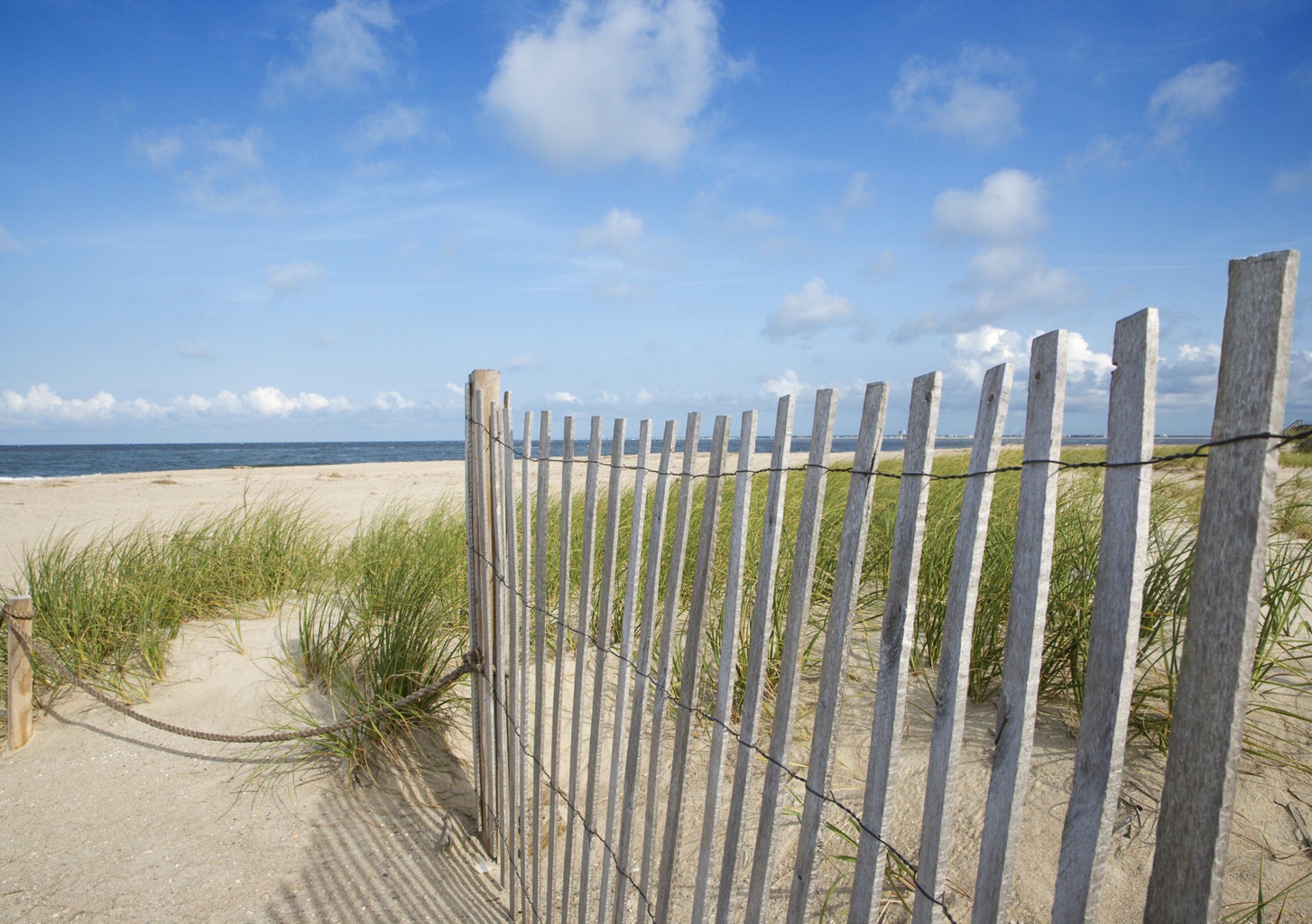Sand Fence

Definition
An artificial barrier of evenly spaced wooden slats or synthetic fabric erected perpendicular to the prevailing wind and supported by posts. Sand fences are usually made commercially of light wooden slats wired together with spaces between the slats. The distance between slats is approximately equal to the slat width (about 1 1/2 inches).Synthetic fencing fabric is available for this use. The fences are erected 2 to 4 feet high in parallel rows spaced 30 to 40 feet apart over the area to be protected. Fences are supported by wooden or metal posts.
Purpose
To reduce wind velocity at the ground surface and trap blowing sand. Typically used for rebuilding frontal dunes along coastal areas.
Where Practice Applies
- Across open bare, sandy soil areas subject to frequent winds, where the trapping of blowing sand is desired.
- Wind fences are used primarily to build frontal ocean dunes (to control erosion from wave overwash and flooding).
- Sand fences can also be used to prevent sand from blowing off disturbed areas onto roads or adjacent property.
Planning Considerations
When wind fences are approximately two-thirds full, another series of fences is erected. In this manner, dunes can be built 2 to 6 feet high or more during a single season. When the dune has reached the approximate height of other mature dunes or when the building process slows significantly, stabilize with appropriate vegetation.
Installation
- Install sand fences in spring or early summer and seed selected permanent vegetation in the fall or the following spring.
- Erect a windward fence parallel to existing dune (generally perpendicular to the prevailing onshore wind),at least one foot above the maximum annual high water elevation. Locate a second fence generally parallel to the first at the top edge of the eroded dune bank. Space additional parallel fences 30 -40 feet apart as needed over the area to be built up.
- A second set of fences may be erected perpendicular to the first to protect captured dune sand from cross winds. Space perpendicular fences a greater distance a part (50-75 feet).
- Support fencing material with 2 x 4-inch or 3-inch round posts,6 feet long minimum, driven firmly into the ground at least 2 feet and spaced approximately 12 feet apart. Alter spacing so that posts are placed at all low points. Secure fencing to windward side of posts by tying or nailing. Press bottom of fencing material firmly into the ground at all points.
Raising the Dune
When the fence system is approximately two-thirds filled with sand, erect another series of fences until desired dune height is reached.
Final Stabilization
When the dune-building process slows significantly, the dune must be permanently stabilized. Planting should begin in November and be completed the following spring even if the dune has not reached the desired height. Vegetation hastens the building process. Maintain fences until vegetation is well established.
Common Trouble Points
Bottom fence located too low
Fence washes out.
Fences not maintained long enough
Some seasons provide little opportunity for dune building and fences may have to be maintained for longer periods.
Dune not adequately stabilized with permanent vegetation
Dune is subject to erosion during storms, even with sand fences in place.
Fencing Material Placed On Leeward Side Of Posts or Not Adequately Secured
Sections of fence collapse.
Posts not driven deep enough
Fence collapses.
Fence system located too near the ocean
Not enough sand source for dune building.
Maintenance
Inspect sand fences periodically, and immediately following storms. Repair damaged sections of fence promptly. Maintain fences until vegetation is well established.
References
Massachusetts Department of Environmental Protection, Office of Watershed Management, Nonpoint Source Program, Massachusetts Nonpoint Source Management Manual Boston, Massachusetts, June,1993.
North Carolina Department of Environment, Health, and Natural Resources, Erosion and Sediment Control Field Manual, Raleigh, NC, February 1991.